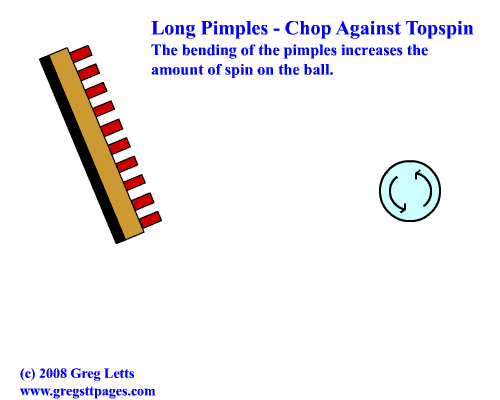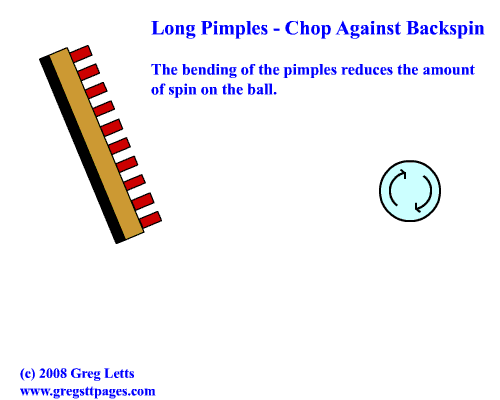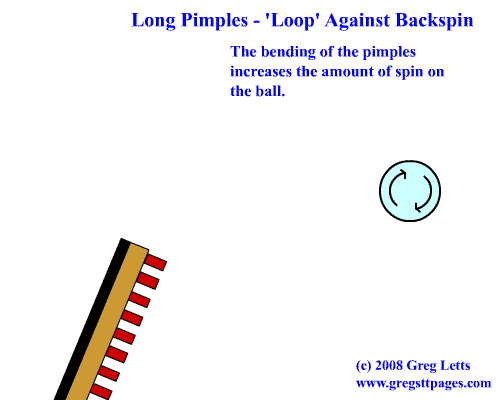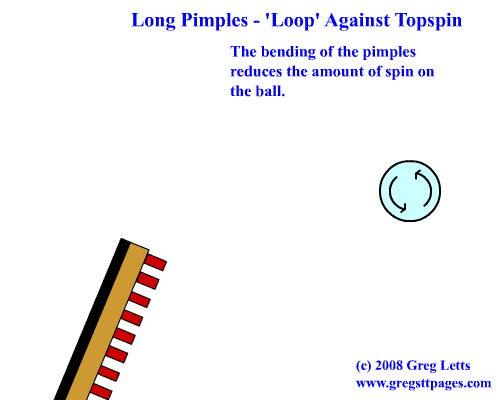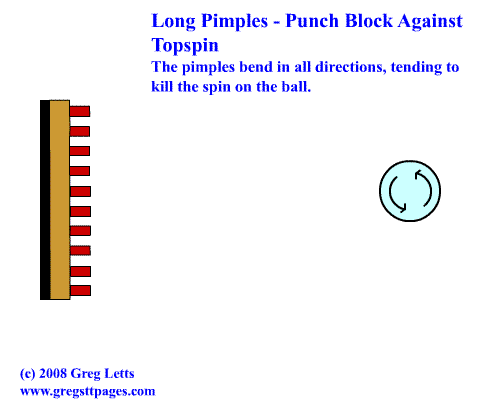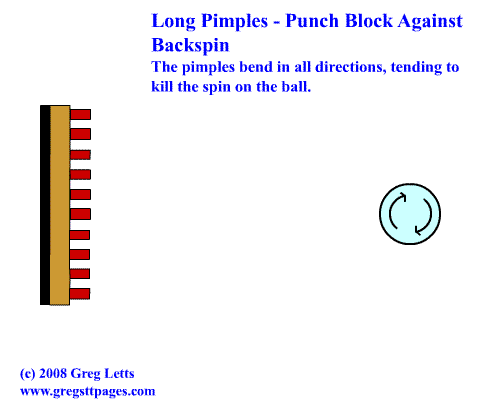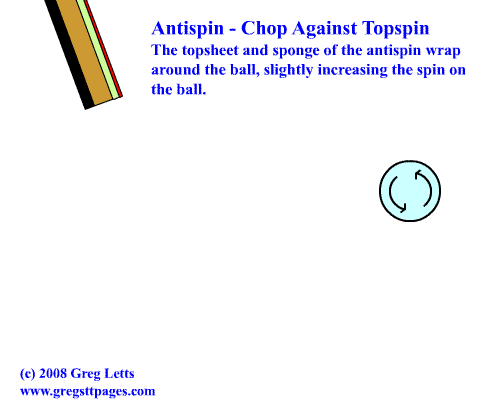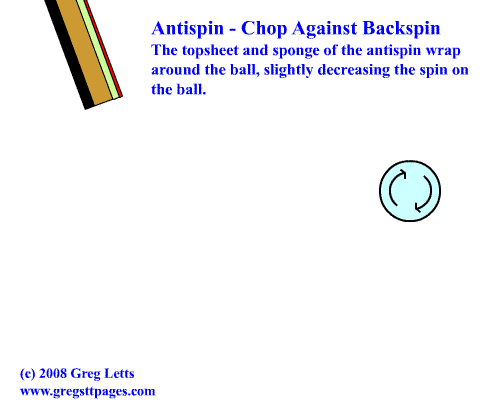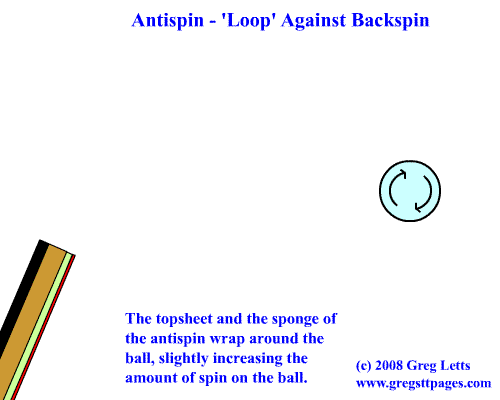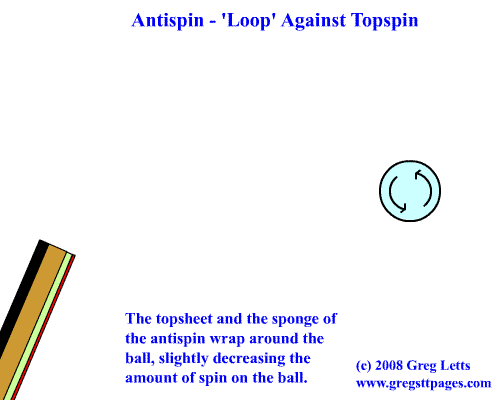Re: "Dark Side" demistificat
Re: "Dark Side" demistificat
How Antispin Really Works
Welcome back! Now that you have a good idea of how long pimples work, I won't have to go over all the same things that antispin and long pimples have in common. Instead, we can focus on what's unique about antispin.
What Is Antispin?
Antispin rubbers are inverted rubbers that are designed to nullify the effects of an opponent's spin. They generally achieve this by having a relatively slick, slippery surface, that doesn't grip the ball much. In physics terms, the angle of reflection is pretty close to the angle of incidence - or more simply put, the ball will bounce off your racket at the same angle it came from (not the same path!) - the spin on the ball won't make much difference.
Antispin has a smooth topsheet for hitting the ball, with the pimples on the inside, instead of the outside. The topsheet can vary from very firm to quite soft. The softer the topsheet, the more it can wrap around the ball, allowing more of the antispin surface to touch the ball.
Since it is an inverted rubber, antispin must also have sponge. These sponges can vary in hardness vs softness, and in the amount of speed they provide. Generally a softer sponge will allow the topsheet to bend more, allowing more of the topsheet surface to touch the ball. A faster sponge will rebound the ball more quickly, allowing less time for the topsheet to be in contact with the ball.
Contact With The Ball - Why Is This Important?
The factors I mentioned above are important because they affect the amount of time the topsheet is in contact with the ball, and the amount of topsheet that will come into contact with the ball. Here's the important stuff to know:
* Antispins are by nature fairly slippery, but they do have a small amount of grip - which varies from rubber to rubber.
* The more slippery the rubber, the less it can affect the original spin on the ball.
* The more time the topsheet is in contact with the ball, the more chance it has to affect the original spin.
* The more the amount of topsheet is in contact with the ball, the more chance it has to affect the original spin.
So a very slippery, hard topsheet on fast, firm sponge will probably have very little effect on the ball's spin, simply allowing the spin to continue while changing the direction the ball is travelling in, while a less slippery, flexible topsheet on slow, soft sponge will be able to affect the spin on the ball comparatively more (although still not a lot when compared to normal inverted rubbers though!).
Antispin - Chop Against Topspin
With all that in mind, take a look at the animation below. In all these examples, I'm going to demonstrate what happens when using an antispin with a less slippery, flexible topsheet, on soft, slower sponge. This is the combination that allows you to affect the spin on the ball the most.
Points to note:
* The soft, slow sponge and flexible topsheet allows more of the topsheet to contact the ball, giving you the opportunity to grip the ball a little, and to use that grip to increase the spin on the ball a little.
* Slipperier, stiffer topsheets on faster, firmer sponge will increase the spin much less, tending to simply return the ball back to your opponent with little change in the spin, apart from the reduction due to air friction.
* Just like with long pimples, the spin on the ball going back to your opponent is backspin, which is what he would expect. It probably won't be quite as much as he expects though, since the antispin won't grip the ball very much.

